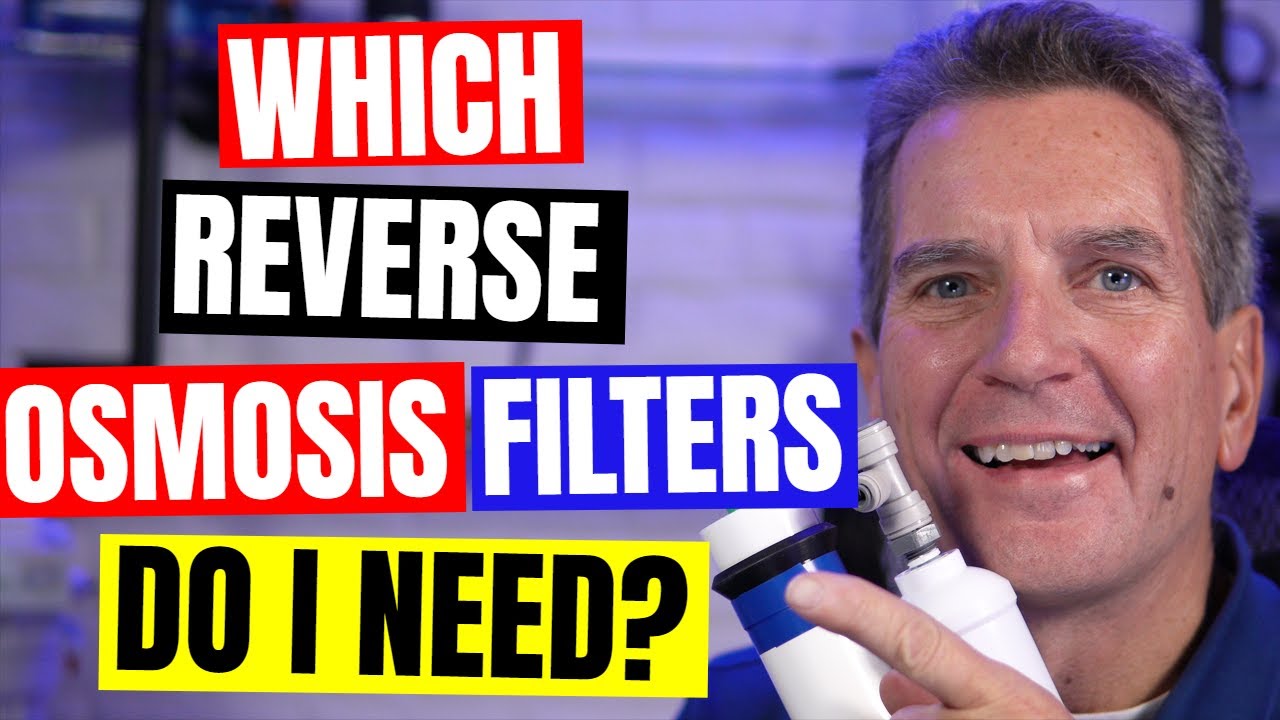
Is it time to replace your Reverse Osmosis (RO) filters but you have no idea WHAT you need or WHERE to get them? Not sure of the make and model of your Reverse Osmosis system? Why are there so many different filters for RO’s anyway?
No worries! Gary the Water Guy is here to help simply water treatment solutions for you right now.
BEFORE GETTING STARTED: If you don’t know how Reverse Osmosis Drinking water systems work, you can check out my overview video on RO systems first here.
COMPARING BEST-SELLING RO SYSTEMS
Basically, there are two types of Reverse Osmosis drinking water systems when it comes to their filters. Proprietary and non-proprietary. Let’s use these two very popular RO systems as an example: the Water Saver 75 and the Goldline 50.
If your RO system has similar looking filter housings to the Water Saver 75 and this Goldline 50, you’re in luck. That means you have a Reverse Osmosis system that uses non-proprietary filters.
In fact, these systems both use the same most common sediment and carbon filters. Also, each one uses one of the most common post (or after) carbon filter types.
RO REPLACEMENT FILTERS
 GOLDLINE 50: The replacement set for the Goldline 50 uses one sediment and two carbon filters with the inline post filter with ¼” threaded fittings at either end. You just unscrew the fittings from the old filter and use them on the new filter. |

WATER SAVER 75: For the Water Saver 75, it also uses the same 3 filters on the bottom but a different carbon filter on top, with this filter replacement bundle. This post carbon filter uses quick connect fittings, which in this case are ¼” but in some cases can be 3/8” or more. Get your Water Saver 75 replacement filters combo pack here! |
PRO TIP: To determine the size needed, just measure the outside diameter of the tubing.
INLINE FILTERS & FITTINGS

To determine which inline filter your system uses, check to see if it has fittings on the ends that can be removed. If so, measure the diameter of the tubing going into the filter and then disconnect the tubing. This YouTube video of mine shows you how.
Wondering how to find out what size fitting you have going into the post filter? Measure the diameter. NOTE: the measurement will not be the same as the “size”. See the following:
- 1/8” fitting is .405 inches or about 3/8” outside diameter
- ¼” fitting is .540 inches or about 1/2” outside diameter
- 3/8” fitting is .675 inches or about 5/8” outside diameter
Once you know the diameter, you can find the fitting you need for your system.
With our Omnipure filters the last two letters of the product code contains the fitting size info. For example:
- A = 1/8” female thread
- B = ¼” female thread
- C = 3/8” female thread
- J = ¼” straight female QC (quick connect)
- K = 3/8” straight female QC (quick connect)
RO REPLACEMENT MEMBRANES:

When it comes to membranes they are rated by their capacity to produce treated water, so many gallons per minute.
The capacity is often in the name of the system, like Goldline 50 has a 50 gallon per minute membrane; the Water Saver 75 has a 75 gpm membrane.
Most systems that have a typical membrane housing like this will use standard 1.8” x 12” membranes.
If there is no indication as to the flow rate of your membrane you can always remove it and usually it is written on the membrane inside the housing. This video shows you how to remove the membrane.
FREE SHIPPING COAST TO COAST!
- SHOP NOW --> Goldline 50 RO System replacement membrane. This is a Pentair 50 gpd membrane and it's available on our website.
- SHOP NOW --> HUM Water Saver 75 RO system replacement membrane. It has a high efficiency membrane that is encased. As you can see by the labelling, it is a Pentair part and located on our website.
NEED HELP?
If your system does NOT look like any of the systems we’ve discussed here today, don’t worry, just email us a picture here. We’ll check it out and recommend the correct filters for you.
Click here for your next video on Reverse Osmosis drinking water videos, and I’ll see you there!
